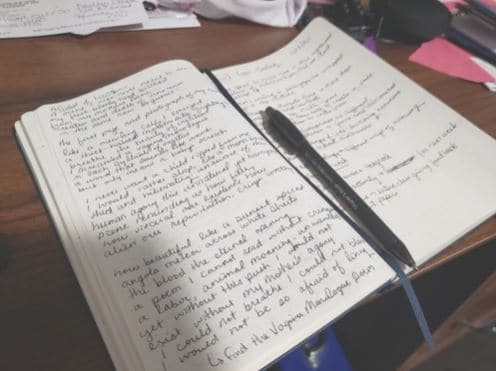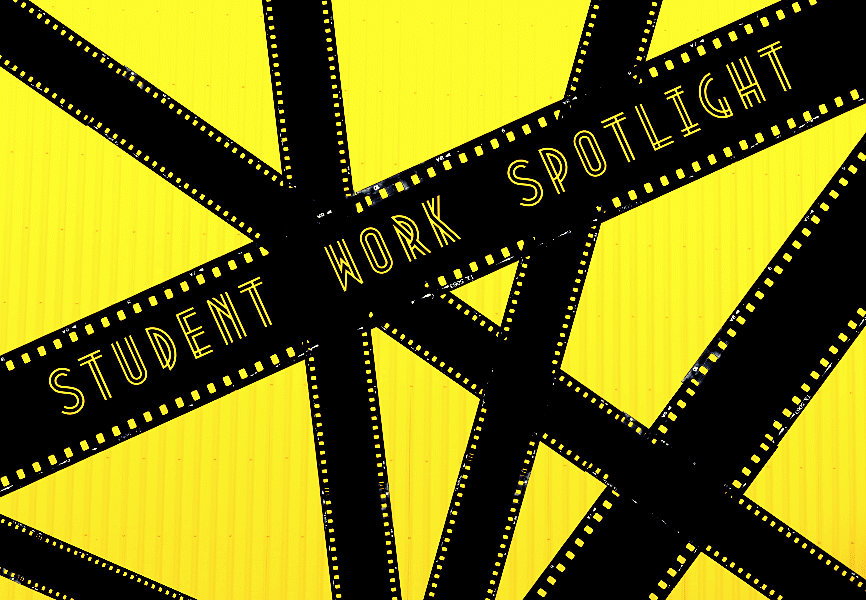In WRD, students confront more than what is traditionally viewed as writing. Rather than limit ourselves to the label of writer, we also pursue composition in other media, like audio or video. Multimedia (or multimodality, depending on who you ask) is another area of study where we learn the theory and praxis of interweaving texts from different media.
WRD 533 Writing Across Media, taught by professor Jason Kalin in Autumn Quarter 2020, provided students the chance to learn about and compose these very texts. While composing, Dr. Kalin instructed the class to lead with certain questions
“With WRD 533 in Autumn Quarter 2020, I tried to encourage students to think about both the how and why of writing across media – not only how to compose with images but also why a writer might want to,” said Kalin. “What does a photograph, for example, allow the writer to do that written text could not? And why is that difference important to the composition, whatever the composition happens to be?”
With questions aimed towards writing technologies and mediated experiences, students investigated the materiality of writing and what it means to actually experience and interact with a text. Even when reading standard linguistic based texts like the one before you, their visual elements, like paragraph shape and font choice, have real rhetorical effects on us. Stack on multiple layers of media, and the rhetorical appeals become more complex.
“In this way, the course projects asked students to work with media as materials – the idea that a photograph is not only about something but also is something,” said Kalin. “A material rhetoric approach to writing across media suggests that a photograph is not simply a translation of ‘a thousand words.’ Instead, a photograph is another way of thinking, composing, writing. Making a photograph makes different thoughts and different meanings possible – for both composer and audience. Working with media as materials, students followed the materials to create multimedia/multimodal compositions.”
Along with weekly experiments with different media, students were tasked with composing their own multimedia texts that capitalized on the idea of new media. According to scholar Wysocki, new media texts highlight and call attention to their compositions, to the point that the reader is aware of the media they are in contact with – a sort of mediated seance with the spirit of the text.
A variety of amazing projects were made, projects that we have gathered here for perusal.
Short on Heroes by Walter Stallings

Pulling from Geoffrey Sirc and his idea of author-as-collector, Walter’s map of Memphis’s punk scene is a true “scrapbook of time and place.” Calling it a memory mixtape, Walter uses mapping software to trace a combination of memories and local history that he packages into videos, music, and personal narrative.
The Shining and Trauma Stories by Kerri Martin
All compositions are bodies of form and content, synthesized containers for a kind of experience. Kerri’s video embodies and expresses horror and trauma. Splicing together clips from Kubrick’s The Shining, Kerri’s video repackages the masterful tension of the film to create a pure ambiance that reflects the feelings of being haunted by past traumas. Kerri cites her own feelings of trauma and her relation to the film as her inspiration, and she channels that energy into a collection of uncomfortable moments with an uncomfortable stream of musical sound.
The Recursive Body: A Digital Chapbook by Kaitlyn Ulmer
For her project, Kaitlyn voiced her prosaic poems into a chapbook of videos that offer vignettes of mood and contemplation. She describes her intentions: .

“In Writing Across Media, we have discussed the use of voice as a type of materiality which conveys both emotion and human connection in a way which written words alone do not. By further incorporating other media, such as photography, video and sound, I feel that I can create a more immersive experience for the audience which can be shared through the social distancing of social media. In some ways, I am not just recreating the open mic experience, but expanding upon it, by inviting the audience to experience more than just a single voice, but also seeing and hearing what the author intends beyond the words on the page.”
The Catalyst by Alex Treat
Genre is ever prevalent in composition, whether it’s in writing or video. Alex, for his project, taps into the conventions of remixing, the art of combining works together to make a brand new one. He created an animated music video that mixes the Linkin Park song “The Catalyst” with the cyberpunk thriller Psycho-Pass to create a techno explosion of dystopian mood and angst.

Alex, you distilled our classroom experience really well!